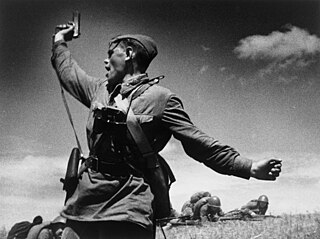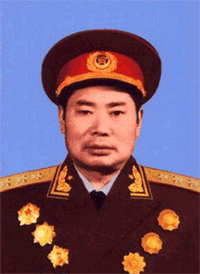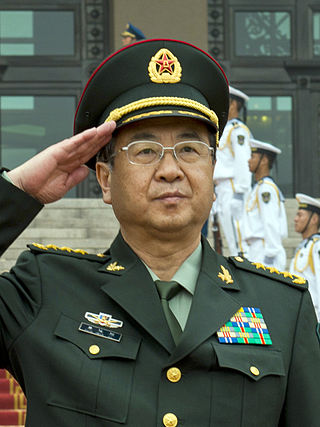
In the military, a political commissar or political officer is a supervisory officer responsible for the political education (ideology) and organization of the unit to which they are assigned, with the intention of ensuring political control of the military.

Xie Fuzhi was a Chinese Communist Party military commander, political commissar, and national security specialist. He was born in 1909 in Hong'an County, Hubei and died in Beijing in 1972. Xie was known for his efficiency and his loyalty to Mao Zedong, and during the Cultural Revolution he played a key role in hunting down Mao's enemies in his capacity as Minister of Public Security from 1959 to 1972.

Zhang Zhizhong or Chang Chih-chung was a Chinese military commander and politician, general in the National Revolutionary Army of the Republic of China and later a pro-Communist politician in the People's Republic of China.

The Beijing Military Region was one of seven military regions for the Chinese People's Liberation Army. From the mid-1980s to 2017, it had administration of all military affairs within Beijing city, Tianjin city, Hebei province, Shanxi province, and Inner Mongolia Autonomous Region. The Region is mainly responsible for defending the People's Republic of China from Mongolia and Russia, and also protects the capital of China, and had the largest number of military personnel of any of the seven regions active from 1985 to 2017. The Region has now been disbanded and superseded by the Central Theater Command and Northern Theater Command.

Yang Dezhi was a Chinese general and politician. He was senior military officer in the North China Field Army, a veteran of the Korean War and commander in China during the Sino–Vietnamese War.
Zhengtai Campaign was a series of battles fought between the nationalists and the communists during the Chinese Civil War in the post World War II era, and resulted in the communist victory.

Tao Zhiyue was a Chinese military officer and politician, lieutenant general of the National Revolutionary Army of the Republic of China, and a full general of the People's Liberation Army of the People's Republic of China.

Yang Baibing was a Chinese military officer. He was a senior general and political commissar in the Chinese People's Liberation Army and the younger half-brother of Yang Shangkun. Together, the two brothers effectively controlled the PLA from the early 1980s until the early 1990s.

Fang Fenghui is a former top general in the Chinese People's Liberation Army (PLA). He served as the Chief of Joint Staff and a member of the Central Military Commission. He was placed under investigation for corruption in 2017 and subsequently convicted.
Fu Tinggui is a general of the People's Liberation Army of the People's Republic of China. He served as the political commissar in PLA Beijing Military Region since 2003 until 2009.
The Yetaishan Campaign (爷台山战役), also known as the Chunhua Incident (淳化事变) by the nationalists and dubbed the Yetaishan Counteroffensive (爷台山反击战) by the communists, was a series of battles fought between the nationalists and the communists during Chinese Civil War shortly before the end of World War II, and resulted in the communist victory.

During the 1989 Tiananmen Square protests and massacre in Beijing, the Chinese People's Liberation Army (PLA) played a decisive role in enforcing martial law, using force to suppress the demonstrations in the city. The killings in Beijing continue to taint the legacies of the party elders, led by Chinese leader Deng Xiaoping, and weigh on the generation of leaders whose careers advanced as their more moderate colleagues were purged or sidelined at the time. Within China, the role of the military in 1989 remains a subject of private discussion within the ranks of the party leadership and PLA.

The Central Guard Unit, formerly known as the Central Guard Regiment is a unit of the People's Liberation Army Ground Force (PLAGF) of the People's Republic of China responsible for providing security to senior members of the Chinese Communist Party (CCP), including the General Secretary, the Politburo, and Central Committee as well as ministers and members of the State Council. It is a powerful political tool for the paramount leader as it can control access to, and conduct surveillance on, its charges.
The 28th Group Army was an army corps of the Chinese People's Liberation Army that existed from 1949 to 1998. From 1952 to 1971, the 28th Army was based in Putian, Fujian and belonged to the Fujian Military Region. From 1971 to 1998, this army corps belonged to the Beijing Military Region and was based in Shanxi Province, initially in Houma and then in Datong. At the time of its dissolution in 1998, the 28th Army was composed of the 82nd, 83rd and 205th Infantry Divisions, the 7th Armored Division, an artillery brigade, an anti-aircraft brigade, an engineer regiment, a communication regiment and a reconnaissance battalion. The army corps’ unit ID number was 51366.
The following lists events from 1994 in China.
Yu Zhongfu is a general of the People's Liberation Army Air Force (PLAAF) of China. Having served in the PLAAF for more than 40 years, he was appointed Political Commissar of the PLAAF in July 2015. He was replaced by general Guo Puxiao in January 2022.
Wang Jianmin is a retired lieutenant general of the People's Liberation Army (PLA) of China. He served as Deputy Political Commissar of the Lanzhou Military Region and Political Commissar of the Xinjiang Military District.
Jiang Jianzeng is a retired lieutenant general of the People's Liberation Army Air Force (PLAAF) of China. He served as commander of the Nanjing Military Region Air Force and the Beijing Military Region Air Force.

Liu Zhenwu is a retired general (shangjiang) of the Chinese People's Liberation Army (PLA). He was the first Commander of the PLA Hong Kong Garrison, and later served as Deputy Commander and Commander of the Guangzhou Military Region, and Deputy Chief of the PLA General Staff Department.
Drawing Sword is a 2005 Chinese historical and Second Sino-Japanese War based TV series directed by Zhang Qian and Chen Jian, written by Du Liang and Jiang Qitao, and starring Li Youbin, He Zhengjun and Zhang Guangbei. It is based on the novel Drawing Sword by Du Liang. The series was first broadcast on CCTV-1 in China from 13 September to 28 September 2005.











